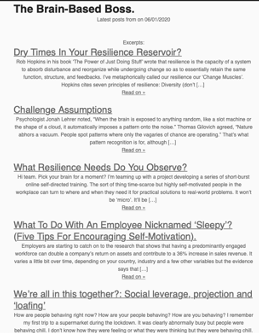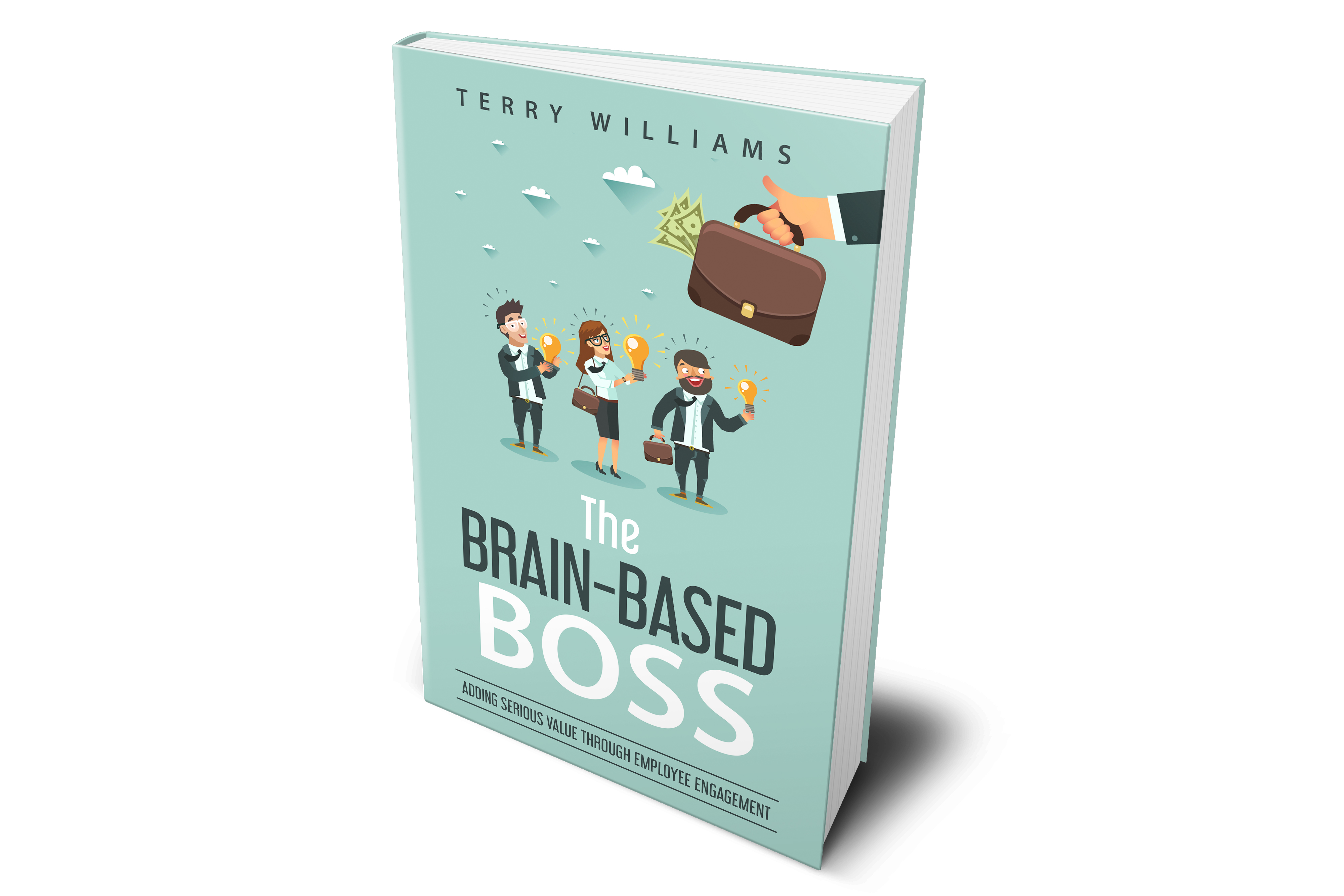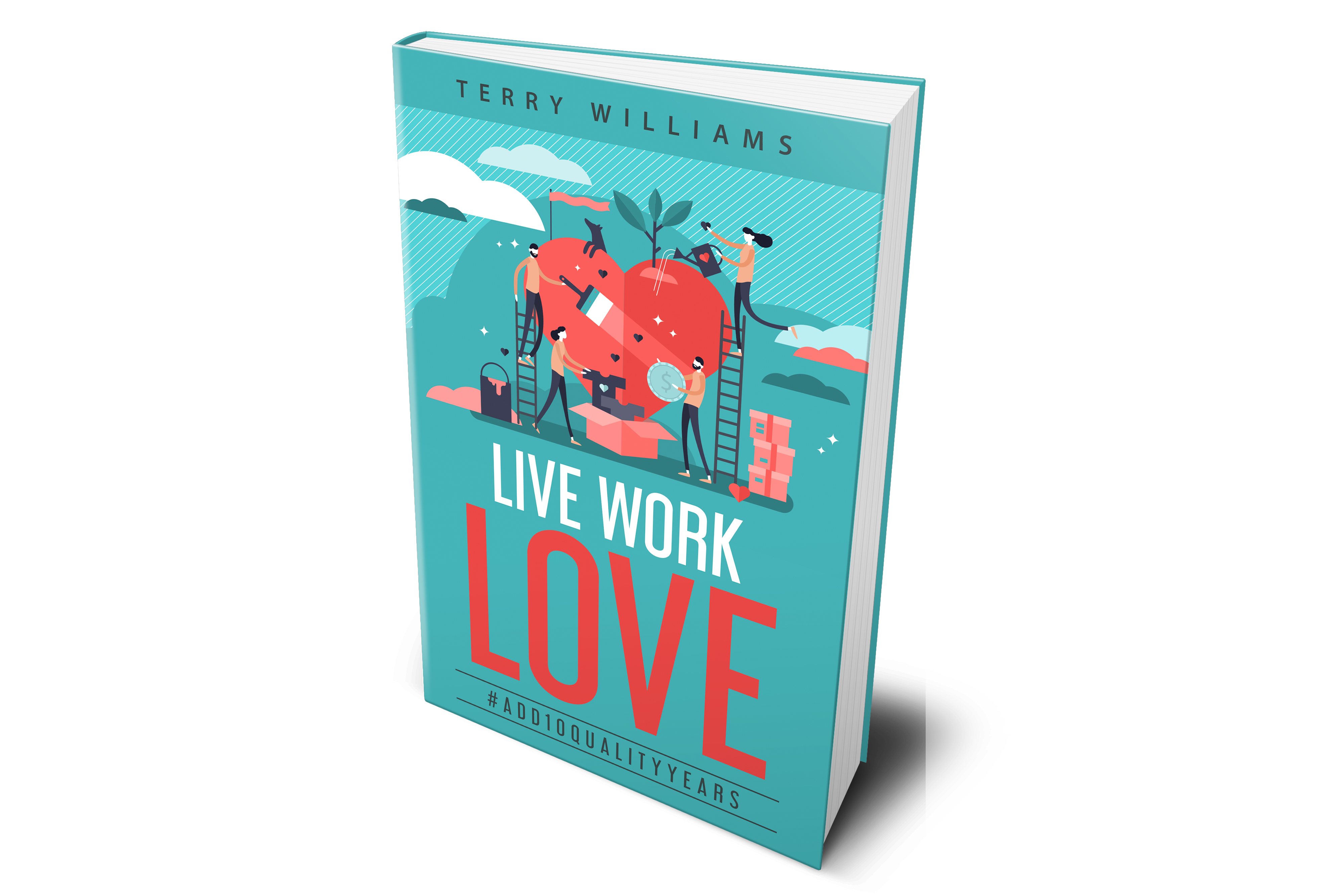Improving culture and engagement
I’m onto the 2nd day of a 2-day workshop I’m running with some new leaders in an organisation in the sports ‘industry’.
Had a quick ole brainstorm yesterday around some commonalities between sporting leadership and business leadership, especially when you are both. Here are a few off the list. Gotta say it’d be hard to argue that if you targeted one of these a week for a couple of months, you wouldn’t make some decent inroads into improving culture and engagement:
· Alignment of personal and team goals as much as practicable.
· Becoming active, if not necessarily perfect, communicators.
· Eliminating “they” and “them” when teammates are talking about each other.
· Self-generated peer-to-peer recognition.
· A consistently understood and agreed sense of building something together.
· The elimination of defensiveness.
#leadershiptraining #leadershipdevelopment
The problem with challenges is that they’re challenging

Responsibility and being needed aren’t just things that society tries to convince us we should have because it’s morally virtuous. They’re things that keep us alive, purposefully active, and connected.
An Ellen Langer study of nursing home residents created 2 groups. One group was encouraged to make decisions for themselves – where and when to receive visitors for example. They were given a houseplant to look after. The other group were equally as looked after but were not offered the responsibilities. They were given the houseplants but told not to worry about them and that they would be looked after for them. The mortality rate of the group with added purpose was half that of the other group.
Our body & mind get used to a constant amount and grade of workload. You do not build muscle by lifting the same weight over and over again. The entire basis of progressive resistance training is that, as your body does get used to workload, you increase the workload. The body adapts. Our physiology is set up for this.
Nassim Taleb in his book ‘Antifragile’ writes about how just as human bones get stronger when subjected to stress and tension, many things in life benefit from stress, disorder, volatility, and turmoil. What Taleb has identified and calls antifragile are things that not only gain from chaos but NEED chaos in order to survive and flourish. I think, to a degree, your entire life is one of those things, as long as you get to initiate and control the chaos. Rather life on a rollercoaster than a conveyor belt.
The problem with challenges is that they’re challenging, but your self-selected challenge doesn’t have to be dangerous or big. If you’re right-handed, spend some time attempting things with your left hand. Rearrange your kitchen cupboards so you’re operating less out of habit. Tackle a foreign language. Zelensky seems even more hardcore in his original Ukrainian.
I’m no expert on geo politics. I know some things about leadership development. A graph of Zelensky’s life and career is no straight line; it was a roller coaster. No one could be prepared for what he is leading but he never got stuck in a rut or settled for a comfort zone. That he won Ukraine’s ‘Dancing With The Stars’ in 2006 may seem silly or irrelevant but he put himself out there. Now, he is REALLY putting himself out there. His mindset did not start the day he got the job of ‘legend’.
None of us are ever going to find ourselves in anything close to his situation. But if you want to effectively lead a family, work team, or community, that doesn’t start the day you get the job. We have to work out our ‘change muscles’ ahead of time. We need to test ourselves so we’re ready when life tests us later.
#personaldevelopment #growthmindset #traininganddevelopment
‘Troika’ – An internal Consultation Process
I am reading up on facilitation techniques so I can customise a workshop I am running for an upcoming client. I discovered something called the ‘Troika Liberating Structure.’ (I ‘discovered’ this in the same sense that Europeans ‘discovered’ America).
Weirdly, the term ‘Troika’ means a political regime ruled effectively as a collective authority of three powerful but separate individuals. OK, is this a facilitation technique or a cool, new NetFlix drama?
The bones of it are:
1. Form groups of three and invite them to explore the questions “What is your challenge?” and “What kind of help do you need?”
2. Have the groups sit in small circles, preferably with knee-to-knee seating. In each round, one participant is the “client”, the others are “consultants”. Everyone has an equal opportunity to receive and give coaching.
3. Invite the participants to reflect on the consulting question (the challenge and the help needed) they plan to ask when they are the clients (1 min.)
4. Round one starts with the first client sharing his or her question in a more detail (1–2 min.)
5. Consultants ask the client clarifying questions (1–2 min.)
6. Client turns around with his or her back facing the consultants
7. Together, the consultants generate ideas, suggestions, coaching advice (4–5 min.)
8. The client turns around and shares what was most valuable about the experience (1–2 min.)
9. Groups switch to the next person and repeat the steps.
I’ve been doing variations on this for years but there are some subtleties in the Troika that could make a real difference. I can see it working with virtual teams using tech. I can see it being more inclusive of introverted personalities, and different cultures.
I’m posting about Troika because the fundamental premis of it is that the answers a team needs probably already lie within the team itself, not some external provider of consulting wisdom, nor some inherently gifted leader with good intent. Better still, the ‘internal consultation process’ isn’t mutually exclusive, and you can still spend time and money on external folk if you wish. Each source of info can either corroborate each other, or raise a flag by contradicting, thus driving a search for a tie-breaking source.
Certainly, I find that an external independent facilitator / trainer is usually a good investment but then I would say that, wouldn’t I?
#facilitationskills #leadershipdevelopment #brainstorming
No, thank YOU for getting touch

I’m not sure if this is a good news story or a bad news story. It is a story, and it was an adventure. Not for me, but for a parcel sent to me from Arkansas USA on May 5th.
I received it Oct 27th. Hey, I get it. Plagues. Lockdowns. Political interference in the system. Supply chains. Most days, I’m not a moron and I’m not an insensitive monster. I figured it would take a while. It wasn’t mission-critical. Honestly, I’m amazed anything ever arrives anywhere ever. It’s a big planet and parcels are relatively small and reliant on a whole bunch of people not losing, destroying, damaging, misdirecting, ignoring it etc. I have no doubt there are stats showing a 99 point something percent success rate.
The adventure began thanks to online tracking. I checked in after a couple of months and followed the history of erratic and, to me, unpredictable lurches around the continental US. I think Pixar could make a movie about the travels of my parcel, anthromorphed ‘Cars’-style. I’m not saying Tom Hanks should play my parcel but I’d be OK if they gave someone else a chance, like Paul F Tompkins. I guess in a prologue, the parents of my parcel would have died tragically? Ooh, I know that post offices do have a ‘dead letters’ department. That is soooo Pixar.
Then, suddenly, (Movie Act 2 turning point) it lurched from Chicago to Dallas then TOKYO. After almost 4 months touring route 66’s offshoots, it spent a single night in Tokyo before appearing in Auckland at the end of August.
I’m not going to lie to you. I was disproportionately excited. Auckland was entering lockdown week 3 level 4, so I tried to temper my enthusiasm. I figured it might get stuck in customs for a while.
It didn’t move or get re-scanned for a month. Then, it spent a month in maybe one or maybe various “regional mail centres” being scanned many times. Mid-Oct “out for delivery”. Next day “redirected due to misdirection”. (Note to Pixar director: get Hans Zimmer to do one of those Christopher Nolan-style deep chords here).
At this point, I use NZ Post’s online form to ask what’s going on. I’m being chill. I get that they’re busy in turbulent times. I get an auto-response of “we’ll get back to you in 2 working days”. I did that twice in 2 weeks. Never heard back. There were banners advising 5 day delays in Auckland due to COVID and lockdown. Trying a 3rd time, I found that they’d disabled the contact form entirely.
Again, chill-as, I DM’d them via their Twitter and FaceBook. I got a human response within the hour and within 3 the status changed to “with courier”. Later that afternoon, the parcel arrived.
Stories require a moral – a learning takeaway. I’m not yet sure what this story’s SHOULD be but my behaviour change as a customer moving forward is to bypass whatever customer system businesses have and backdoor it as soon as I can.
Oh, my parcel’s name is Shannon.
Shadowy Inflation

I read an article today about ‘shadow inflation’. (A new term to me. so, today I have already learned something. I’ll take the rest of the day off).
As I read it, it means that rather than increasing prices, businesses choose instead to keep the price the same but give you less for it.
As a consumer of chips and chocolate, I HAVE NOTICED THIS. A bit more air in that bag. A bit less cacao in that foil. In these situations, they have to put a weight or a unit count on their wrapping so an observant and alert consumer might notice fairly quickly that their 250g block is now 200g for the same price. They don’t shout it from the rafters so it’s very likely a bunch of folks buy a bunch of blocks and eventually notice and get grumpy.
Same with services, but those these often dress it up as ‘choice’. You can now pay less to get less or pay more to get the same or pay even more to get slightly more. Airlines have mastered this for years. Bank branches close. Personal bankers evaporate. Do it yourself on the website. Actually, I’m OK with these if they are genuine efficiencies and innovations, and not paying for and not eating an airline meal is one of life’s great pleasures.
And, there’s stealth in between. Say you bought a particular specific shirt in 2020 and you buy it again in 2021, and the price has not risen. That is not inflation as it’s officially measured. Check out the stitches and button quality. A bunch of products have their quality and time spent reduced so the producer can save costs. These are not efficiencies or innovations; these are shortcuts. I don’t mind paying cut-price prices for seconds or shortcut products. This ain’t that.
Now, with COVID, lockdowns, and supply chains unlinking, AND actual inflation pressures, there’s going to be more of this.
What are your bugbears with shadow inflation practices?
Your call is NOT important to us
When you’ve spoken to a bank or an ISP or whatever business, has anyone ever literally said to your face, “Your call, and you, are NOT important to us…”?
You more often than not get acceptable customer service from owner-operated businesses but your experiences will vary wildly when you deal with larger organisations and I’ll tell you why. It’s not, as you might think, because they’re so big that it’s hard for them to control what goes on in the outlying reaches of their empires. It’s potentially strategic.
If you’re in, or have ever been in, an entry-level service role you’ll probably have been subjected to training videos. ‘The customer is always right’. One concept tossed about in these is that losing a customer through poor service is a bad thing. The customer you annoy to the point that they take their business elsewhere might only have been buying a $10 product today but their lifetime value to the company could be thousands. And they’ll tell an average of ten people each. That sort of thing. Customer Relationship Management takes this a step further and turns it on its head.
Companies are very aware that a disproportionately large chunk of their revenue comes from a disproportionately small number of customers. Once they started ranking customers in terms of worth, it didn’t take long to realise that:
a) The small number of high-value customers need to be sucked up to in the extreme;
b) The large number of medium-value customers should get the service they pay for most of the time if we’re not too busy with the high-value customers;
c) The small number of low-value customers, many of whom are actually costing us money, need to either be ignored or actively gotten rid of.
Have you noticed that recorded hold messages rarely say these days that you’re “ninth” in the queue? This is because of such automated queue jumping. They can’t tell you that you’re ninth only to tell you five minutes later that you’re twelfth. They fall back on the old classic, “You’re in a priority queue.” What they leave out is how much or little of a priority. The system knows your phone number and that is linked to your file, in which is your worth.
You might think, “Hey I may be low-value today but I’m gonna be somebody someday so you better treat me right”. Keep thinking happy thoughts. They’ve done the maths.
Are your messages ignored or eventually gotten round to? Do you get served by the new untrained staff for whom competence is still but an aspiration? Does it seem like you’re being intentionally mistreated in the hope of driving you away?
This is LinkedIn so I’m going to assume you’re in management or ownership. You might be the one saying, “The customer is always right”, or “Here’s a list. The customers above the red line are always right…”
What’s your view on strategic customer ejection?
#customerservice #customerrelationshipmanagement #customerexperience
Attitude Matrix
The skills matrix is a straightforward concept in wide use, however I find a lot of variation in its application. I’d like to suggest one more.
But first, a rapid precis of the concept: Label rows with the names of the people in your team. Label columns with the names of the critical skills. Assign each team member a score for each skill. We can debate the nature and process of scoring but it should be observationally objective. I use:
1 – high motivation + low skill (new and keen)
2 – demoralised + some skill but not solo competent
3 – competent + cautious / effortful
4 – competent, motivated, and self-reliant
My roughly sketched image comes from a whiteboard activity I use in some of my leadership workshops where I declare to small groups, “If this was YOUR team, what are your priorities and risks”? (Pop quiz hotshot, what would YOU do?)
I don’t want to get into debates around connecting this tool to remuneration etc. I’d like to suggest applying the tool to more than technical skills. More problems and costs are caused by hiring poor attitudes than poor skills and, as people like me are prone to saying, “hire for attitude; train for skill”. [Spoiler alert: I’m a trainer].
In a perfect world, yes, recruitment can assess attitude over, or equally to, skill but not every employer has an HR dept or lots of choice in filling roles so fussily, so we have plenty of workplaces with plenty of people that may well be technically sufficient but drag down overall performance due to ‘attitude’. Part of the problem is the inherent fuzziness of the term ‘attitude’. Usefulness lies in defining this behaviorally: what does a good attitude look like? What does a good attitude do and say, not do and not say?
This is where my skills matrix variation might assist. Usually, the roman numerals stand in for technical skills such as ‘operate forklift’ or ‘complete spreadsheet’. They could just as easily include behavioural attitude competencies – a short phrase as a label and on an attached page, a short text summary of those descriptive defining behaviours. Teamwork, problem-solving, initiative, learning flexibility, creative-thinking, etc.
Over the years, I’ve built up a bit of a glossary of these competencies, labels and descriptions. I used it recently in a workshop with a leading Auckland law firm today in a workshop for new team leaders.
My one regret with this post on a matrix is that I lack the photoshop skills necessary to create an image like the one I used but using the green text on black screen made famous by the Keanu Reeves’ movie ‘The Matrix’. However, I did manage to insert a Keanu reference in this post – can you spot it?…..
I was listening to a podcast interview with Nobel-prize winning psychologist Daniel Kahneman. I quote him a bunch in a couple of my books. (He won his Nobel prize in economics, not psychology. Must’ve been super-awkward with the runners-up at the Nobel prize after-party).
He reminded me of one of his thought experiments.
Participants were twice subjected to a painful and negative experience. One example was having an arm submerged into painfully cold water. The two experiences differed slightly. One was shorter than the other but the longer one had an additional extra time added onto the end with the water being slightly warmed up. When asked which of the two experiences was better, participants overwhelmingly said THE LONGER ONE. People could endure longer discomfort if the most recent bit was less bad.
Across all the experiments, the researchers found the two primary influencers of how people self-perceived negative experiences were:
The worst bit, and
The last bit.
In a workplace context, perhaps this might impact how we assign tasks? If we’re giving someone a list of hard yards, maybe we finish that off with a sweet gig? (This definitely has applications for parents. I suspect this is how dessert was invented?)
I suspect this will become very relevant to how New Zealand feels about our pandemic experiences AFTER the pandemic.
#leadership #resilience
Time is money and knowledge is power
In my workshops on time management and productivity, I cannot help myself but use the phrase, “Time is money”. It’s short n sweet, and makes a point. No one would throw money out their window but plenty of people, in the workplace and at home, burn time without reward.
I’m not saying everyone should be ‘on’ at 100% all the time. Few are more in favour of chilling and goofing off than me. But, I know when I’m doing it, I know the cost, and I don’t get into debt. AND, I don’t steal other people’s time like I don’t steal other people’s money. (I reserve the right to make an exception for a Vegas casino heist with 11 friends).
One of my workshop activities has participants identify their primary time-wasters: calls, emails, meetings, etc. They might be right but on average, we are our own biggest waster of time. Let’s focus on meetings today though.
Let’s assume that a meeting should happen and is the best way to achieve what’s trying to be achieved. Let’s assume that everyone invited should be there. If someone is 5 minutes late, how do you feel? Others? Do those feeling matter? Hey, stuff happens – traffic, sick kids, etc. But what if that apologising slightly late person has a cafe coffee cup in hand? They stopped and spent some minutes buying that. That was a priority for them. More than your meeting was.
Maybe you don’t care. Isn’t this just fun police pedantry?
You can do what you like. You can have your own priorities. I’m all for work chit chat. But there is a cost, to you and others. Do you even know how much of your day is ‘spent’? I used to talk about lateness being disrespectful and never once changed anyone’s mind. I now talk about time not figuratively but literally as money. This has moved people to change.
Meeting-time cost-calculator apps might be a useful conversation-starter (or stopper). Free and functional, you enter a bit of generalised wage data on meeting participants and display it on the table or screen. Latecomers can see the $ value that their 5-minute lateness imposes non-consensually on others. Those who drag the meeting on beyond its useful life can see the $ value of their choice. Hey, if everyone thinks that’s a smart spend of time then fine, but let everyone make an informed decision.
I’ve had a couple of clients report back in recent weeks how their implementation of such an app has actually affected behaviours. It might be a short term campaign but it can draw attention in an unemotional way to a problem that everyone shares. Team culture is fancy talk for what teams collectively agree is acceptable behaviour. Sometimes a pattern-breaker like this can bring on substantial and sustainable culture change.
‘Time management’ isn’t real. ‘Self-management’ is. Knowledge is power and time is money.
#productivity #timemanagementtips #personalproductivity #teamculture
Team Development: Track n Trace
As part of some research, I bought some soundfiles online back in May from the original producer. (All perfectly legal). The files add up to quite some size so they’re on a hard drive. The seller had retired to Arkansas, USA. He provided a shipping tracking number. I will admit I wasn’t 100% confident but, even if it went astray, digital files are a cheap and easy fix. With distance, pandemics, and the USA of it all, I did wonder how long it would take. After a month, I checked in on that tracking number. Now, 4 months later, if Govt contact tracers called me, I would have to say that tracking number is one of my three closest contacts.
The package is not lost. It’s never been lost. Oh, but how it has travelled, backwards and forwards, north and south. Every time its tracking status has been diligently updated by them and ritualistically noticed by me. Maybe a month ago, after its Chicago to Dallas leg, I felt some optimism. Today, it’s in Tokyo. Thanks to the Olympics, I know it is possible for things and people to get from Japan to New Zealand, so I’m abuzz with enthusiasm.
My point is that people and teams can put up with a lot if they have a map, a plan and a timetable. My dentist, during a root canal (mine, not his) kept me up to date with verbal ‘% complete’ notifications. I have to say that getting over 50% was quite a thing.
There’s a classic model for the life cycle of teams from Tuckman: forming –> storming –> norming –> performing –> etc. Whilst not perfect, what I like about it is that it exists and is better than nothing. If you’re a leader or change manager, buy-in and engagement is far more likely with:
a) a map + plan + timetable, and
b) a way for each of them to check in on progress (track n trace).
#employeeengagement #teambuilding














